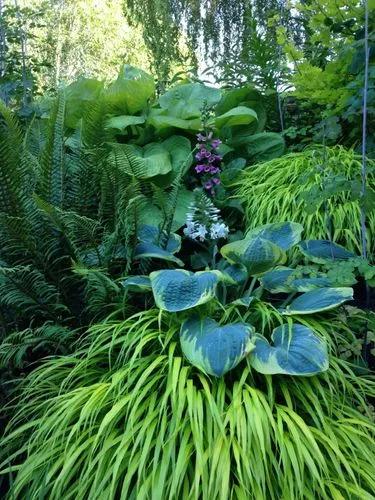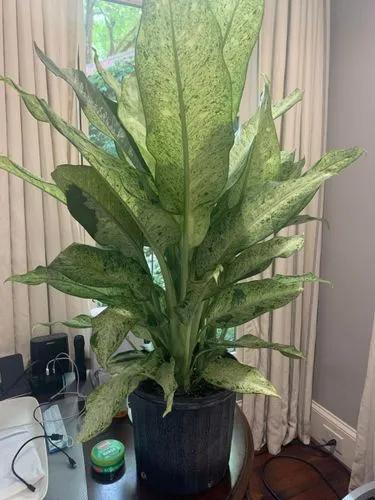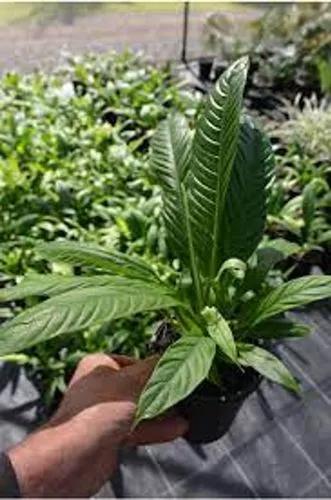Golden Heart Corn Plant has large, strap-like leaves variegated with green and yellow. It tolerates a wide range of light conditions from bright indirect to low light. Grows to 10-12 feet.
Dracaena Golden Heart Care
Dracaena fragrans 'Golden Heart'



One of the newer varieties of Dracaena, 'Golden Heart' has wide, upright foliage with yellow stripes. Over time, it will grow as tall as 6' and develop a thick, woody trunk. Definitely a recommendation for a beginner, these plants can tolerate somewhat long periods without water and can tolerate a bit of overwatering, too. While it can grow in fairly dark areas, 'Golden Heart' prefers slightly brighter spots (think eastern exposure). If grown in less than ideal light levels, the colors will appear muted and duller than expected.
How to Care for the Plant

Water

Usually, watering approximately once a week is adequate. Dracaena benefits from a light misting two or three times per week when a air is dry, especially during a winter. Misting also helps to keep a foliage clean and free of dust.

Pruning

Dead or dying sections of the plant can encourage pest infestation or disease. Removing these not only makes your houseplant look better, but reduces the risk of further problems down the line.

Fertilizer

As with most houseplants, they will benefit from an occasional feed during the growing season. An organic, balanced, liquid fertilizer once a month during spring and summer is recommended.

Sunlight

They grow at their best close to a window in partial sun and shade.

Soil

Loam contains a proportion of 40% sand, 40% silt, and 20% clay.

Propagation

Dracaena can be propagated from top cuttings. Cut the leaf line; make sure to include some stem nodes. You can let the cuttings soak in clean water until the roots begin to form or plant them in a container of moist soil immediately.

Temperature

Dracaena prefers temperatures ranging from 65 – 78℉ during the day.

Container

Here’s a handy guideline: increase pot size by 2.5-5 cm (1 to 2 inches) in diameter for plants that are growing in pots 25.4 cm (10 inches) in diameter or less. For larger plants, those growing in pots greater than 10 inches in diameter, increase the pot size by 5 or 7.62 cm (2 or 3 inches) in diameter.

Popularity

10,373 people already have this plant 2,442 people have added this plant to their wishlists

Common pests

Mealybugs, scale, aphids, and spider mites can often attack your plant. Use insecticidal soap or neem oil to scare them off.

Frequent diseases

Fusarium leaf spots and soft rot are fairly common for dracaena. Still, it is more likely that you’ve overwatered or underwatered your plant.

Botanist’s tips

- Dracaena is sensitive to fluoride, so you can use purified water to avoid worsening its health
- Dracaena is quite toxic for cats and dogs, so keep it away from your pets
Discover more plants with the list below
Popular articles






